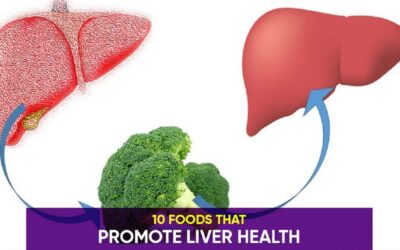Understanding the Anatomy of the Duodenum: A Beginner’s Guide

The duodenum is the first part of the small intestine and plays a crucial role in digestion. It receives chyme, the mixture of food and gastric juice, from the stomach and works with other digestive organs, such as the pancreas and liver, to break down and absorb nutrients. Understanding the anatomy of the duodenum is essential to understanding how it functions in the digestive process. In this beginner’s guide, we will discuss the structure and function of the duodenum.
Anatomy of the duodenum C –
The duodenum is a C-shaped tube that begins at the pylorus, the opening between the stomach and the duodenum, and ends at the duodenojejunal junction, where it connects to the jejunum, the next part of the small intestine. It is approximately 25 cm (10 inches) long and is divided into four parts – the superior, descending, horizontal and ascending duodenum.
The superior duodenum is the first part of the duodenum and is the shortest, measuring approximately 2.5 cm (1 inch) in length. It is located in the retroperitoneal space, behind the peritoneum and receives chyme from the stomach through the pyloric sphincter. It is also connected to the liver and gallbladder by the common bile duct, which carries bile from the liver to the duodenum to aid in digestion.
The descending duodenum is the second part of the duodenum and is approximately 7.5 cm (3 inches) long. It descends along the right side of the spine and is surrounded by the head of the pancreas. The pancreas secretes pancreatic juice, which contains enzymes that help to break down carbohydrates, proteins and fats, into the descending duodenum through the pancreatic duct.
The horizontal duodenum is the third part of the duodenum and is approximately 10 cm (4 inches) long. It runs from the right side of the spine to the left side and is located at the level of the L3 vertebra. It receives bile from the common bile duct and pancreatic juice from the pancreatic duct through the hepatopancreatic ampulla, which is controlled by the sphincter of Oddi.
The ascending duodenum is the fourth and final part of the duodenum and is approximately 5 cm (2 inches) long. It ascends along the left side of the spine and ends at the duodenojejunal junction, where it connects to the jejunum.
The function of the duodenum –
The duodenum plays a crucial role in the digestive process by receiving chyme from the stomach and working with other digestive organs, such as the pancreas and liver, to break down and absorb nutrients. The duodenum is responsible for the following functions –
- Neutralizing stomach acid: The chyme that enters the duodenum from the stomach is highly acidic and the duodenum secretes bicarbonate to neutralize the acid and protect the small intestine from damage.
- Breaking down food – The duodenum receives pancreatic juice from the pancreas, which contains enzymes that help to break down carbohydrates, proteins and fats into smaller molecules that can be absorbed by the small intestine.
- Absorbing nutrients – The duodenum is responsible for absorbing nutrients, such as vitamins, minerals and electrolytes, from the food that is broken down in the small intestine. These nutrients are then transported to the liver through the hepatic portal vein.
- Regulating gastric emptying – The duodenum controls the rate at which chyme is released from the stomach into the small intestine, which helps to ensure that the digestive process is efficient and effective.
Conclusion –
In conclusion, understanding the anatomy of the duodenum is crucial for understanding its role in the digestive process. The duodenum is responsible for neutralizing stomach acid, breaking down food, absorbing nutrients and regulating gastric emptying. It works in conjunction with other digestive organs, such as the pancreas and liver, to ensure that the digestive process is efficient and effective.
It is important to note that the duodenum can be affected by various diseases and disorders, such as duodenal ulcers, duodenitis and duodenal obstruction. These conditions can cause symptoms such as abdominal pain, bloating, nausea and vomiting, and can affect the overall digestive process. Treatment for duodenal disorders may involve medications, lifestyle changes or surgery, depending on the severity and cause of the condition.
In summary, understanding the anatomy and function of the duodenum is essential to understanding how it works in the digestive process. It is a vital organ that plays a crucial role in breaking down and absorbing nutrients from the food we eat, and working with other digestive organs to ensure that the digestive process is efficient and effective.
10 Foods That Promote Liver Health
10 Foods That Promote Liver Health The liver is a vital organ that plays a crucial role in keeping our bodies healthy. It helps filter toxins, metabolize nutrients, and store energy. Eating a balanced diet with foods that promote liver health can help keep your liver...
Endoscopy and its role in diagnosing and treating Gastrointestinal Disorders
Endoscopy and its role in diagnosing and treating Gastrointestinal Disorders Endoscopy is a vital tool used by gastroenterologists to diagnose and treat various gastrointestinal disorders. It is a minimally invasive procedure that allows doctors to examine the inside...
The Global Impact of Viral Hepatitis
The Global Impact of Viral Hepatitis Viral hepatitis is a global health issue that affects millions of people worldwide. It is a group of viral infections that cause inflammation of the liver, and if left untreated, can lead to serious health complications. In this...
We're Here Whenever You Need Us
Phone
Open Hours
Morn: 8:30 AM - 09:30 AM (Baner)
Noon: 03 AM - 04:30 PM (PCMC) Even: 6:30 PM - 08:30 PM (Baner)
Baner Address
Sriram Yashadha Building Office No. 2 First Floor, Balewadi Phata Main Baner Road Baner, Pune, Maharashtra 411045
PCMC Address
215, Gera imperium oasis, near Finolex Chauk, Colony, Pimpri-Chinchwad, Maharashtra 411018
Quick Links
Treatment
Make Appointment
About
Services
Contact



